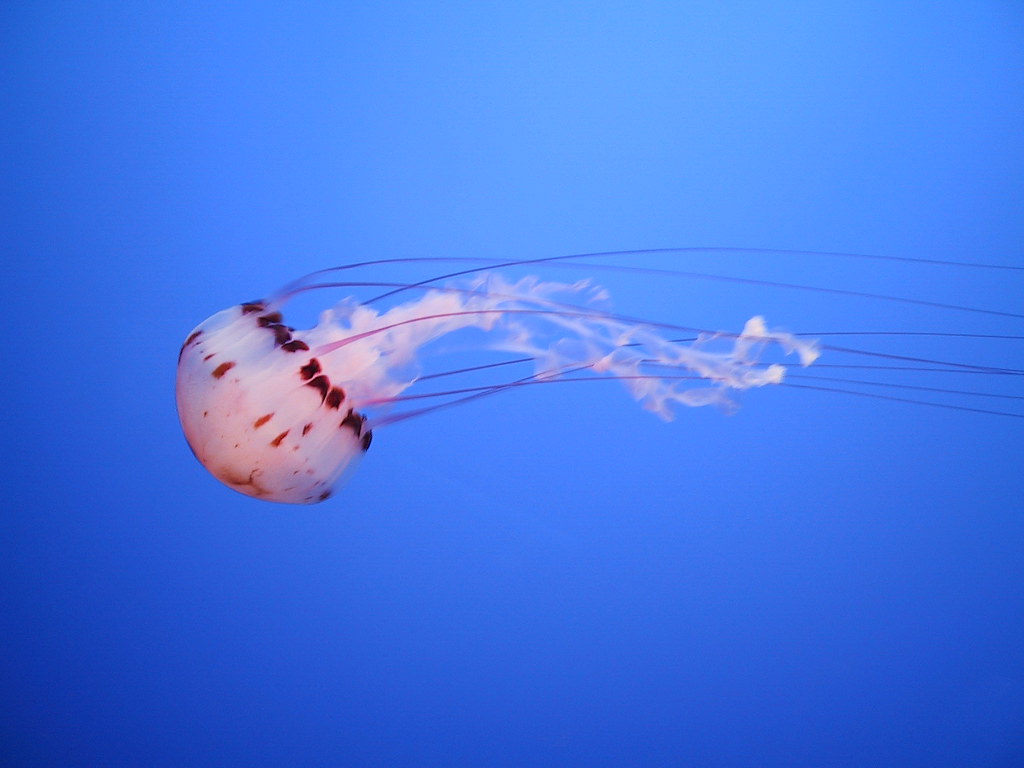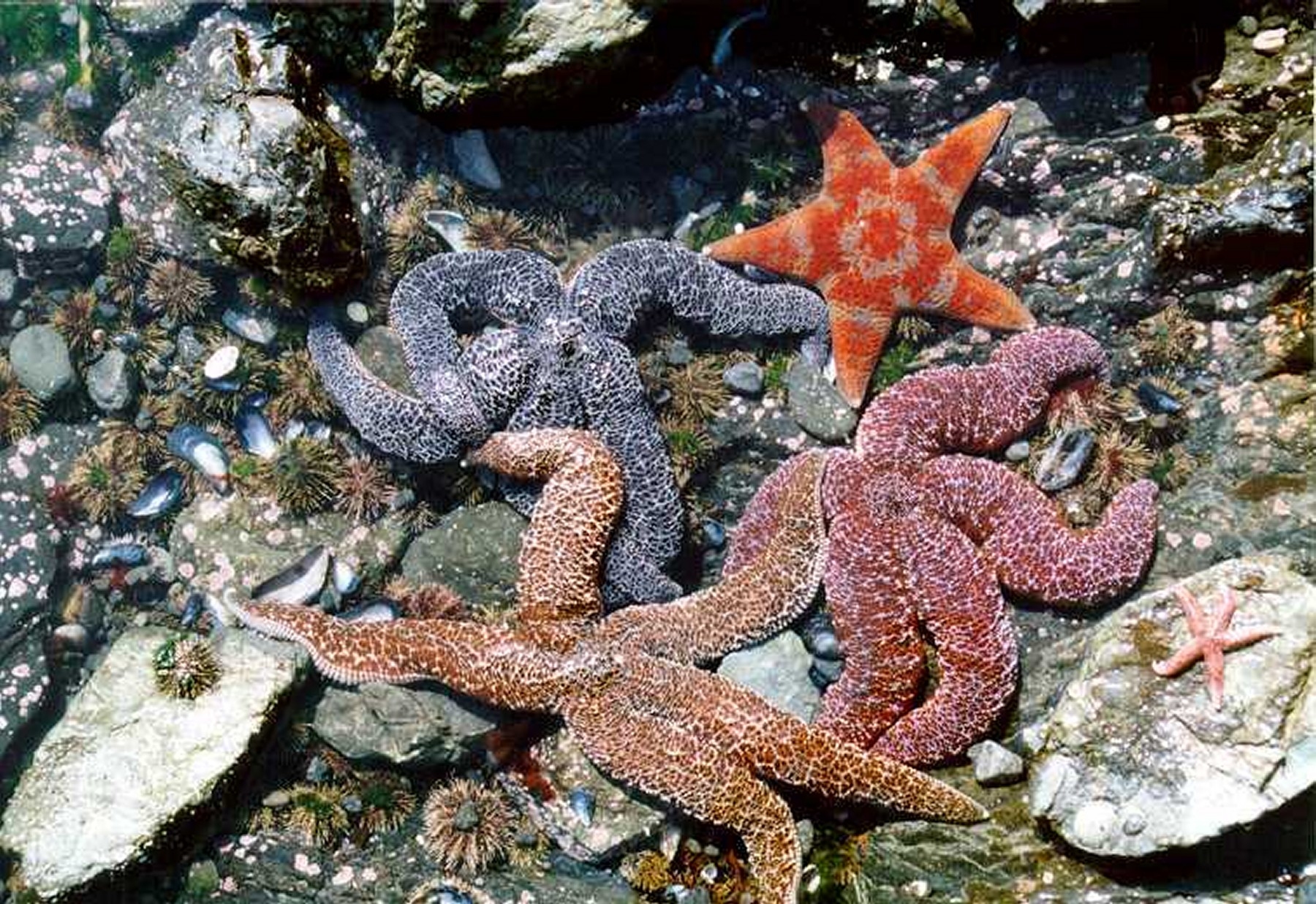Molluscs. These invertebrates have soft bodies, and most also have a hard shell. They absorb oxygen through gills, and reproduce by laying eggs.
Coelenterates. These animals have a soft body. Some have long tentacles. They absorb oxygen through their skin. They reproduce by growing a bud, or small body part. Eventually the bud breaks off and grows into a new organism.
 |
| Jellyfish are coelenterates. Photo from flickr by NBPhotostream |
.jpg) |
| By Nhobgood Nick Hobgood (Own work) [CC BY-SA 3.0 (http://creativecommons.org/licenses/by-sa/3.0) or GFDL (http://www.gnu.org/copyleft/fdl.html)], via Wikimedia Commons |
 |
| Photo from wikimedia. |
Annelids. These animals have a long, soft body that is divided into rings called segments. Some annelids absorb oxygen through their skin, but other have gills. Annelids can reproduce by budding, but some are oviparous.
Shells, exoskeletons and soft bodies with no protective body covering are the three types of body coverings found in invertebrates. Each one is typical of a specific type of invertebrate.



No comments:
Post a Comment